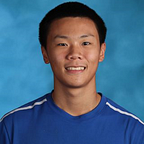How Hideo Nomo Changed MLB History
In the 21st century, many Japanese Baseball Superstars have played in MLB, such as Ichiro Suzuki, Shohei Ohtani, and Yu Darvish. In 2024, players like Yoshinobu Yamamoto and Shota Imanga are beginning a new wave of talent heading to the US to play in the MLB. However, these players would only have been able to play in the MLB with Hideo Nomo carving the path in 1995. He is the player who bridged the gap between the MLB and NPB, Japan’s professional Baseball league.
Surprisingly, one more Japanese player played in the MLB before Nomo: Masanori Murakami. He joined the San Francisco Giants in 1964 as part of a deal between the Pacific League’s Nankai Hawks and the Giants. However, disagreements over the deal caused Murakami to return to Japan and shut the door for players from the NPB to go to the MLB for the next 30 years.
Before Hideo Nomo, there was no Japanese posting system, which is the current way for NPB players to reach the MLB. Instead, players were stuck on the team that drafted them until they completed ten years of service. Nonetheless, Nomo has dreamed of playing in the MLB since the 1988 Summer Olympics, when Japan played the US. Randy Johnson, a future Hall of Fame pitcher, told Nomo he belonged in the MLB after he threw one ⅔ scoreless inning. Fortunately, Don Nomura, a young, half-Japanese sports agent, wanted to challenge the NPB system and was looking for the right player. As a result, Nomo and Nomura teamed up and found a loophole where if Nomo’s team, the Kintetsu Buffaloes, put him on the voluntarily retired list, he could leave to join the MLB.
However, it was going to take a lot of work since Nomo was one of the top players in the league, having won the Sawamura Award, MVP, and Rookie of the Year honors, along with the pitching Triple Crown in 1990. Accordingly, Nomura planned a strategy that included Nomo demanding an expensive 6-year contract, which angered the team into putting him on the list. Afterward, Nomo started negotiating with MLB teams and signed a minor league contract with the Los Angeles Dodgers with a $2 million signing bonus.
Unluckily, Nomo’s departure garnered a lot of negative media attention back in Japan, and his life was now under much scrutiny. For example, during the 1995 All-Star game, a camera crew followed Nomo into the clubhouse bathroom until they realized where they were and left. Nomo and Nomura received death threats and lost many friends, including Nomo’s father, who refused to speak with him for a while.
Ultimately, Nomo believed in his ability and left a fantastic legacy, becoming the only pitcher in MLB history to throw a no-hitter at Coors Field on September 17, 1996. He also finished in the top 5 in the NL Cy Young voting two years in a row and beat out future Hall of Famer Chipper Jones for the NL Rookie of the Year Award. Sadly, Nomo was never the same after 1996 and bounced around several teams, but threw another no-hitter for the Boston Red Sox in 2001.
Although Nomo never made it into Cooperstown, he profoundly affected MLB, allowing players like Shohei Ohtani and Ichiro Suzuki to play in the MLB. He was elected to the Japanese Baseball Hall of Fame in 2014. Without Nomo, fans would not see the full potential of being a two-way superstar or the largest contract ever given in sports history. Ultimately, Nomo’s success allowed Asian players to play in MLB and changed baseball forever.
